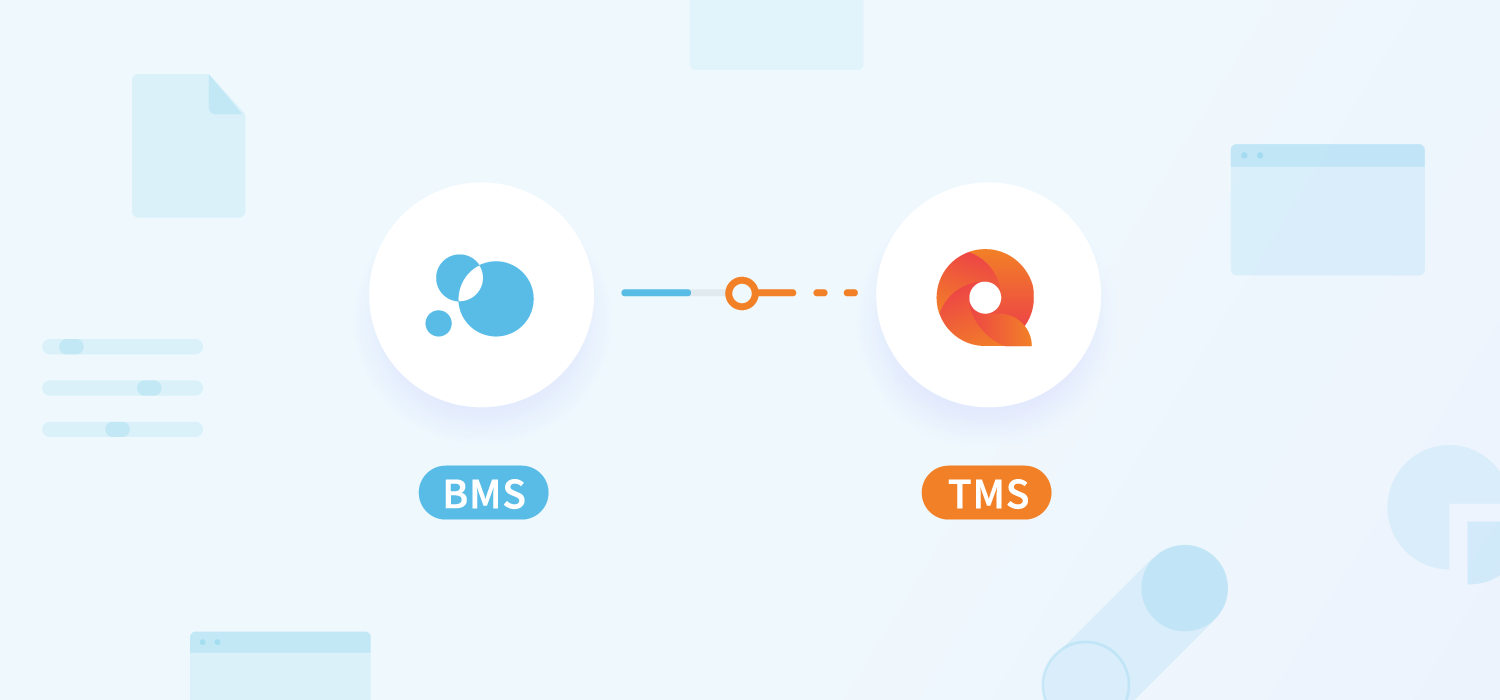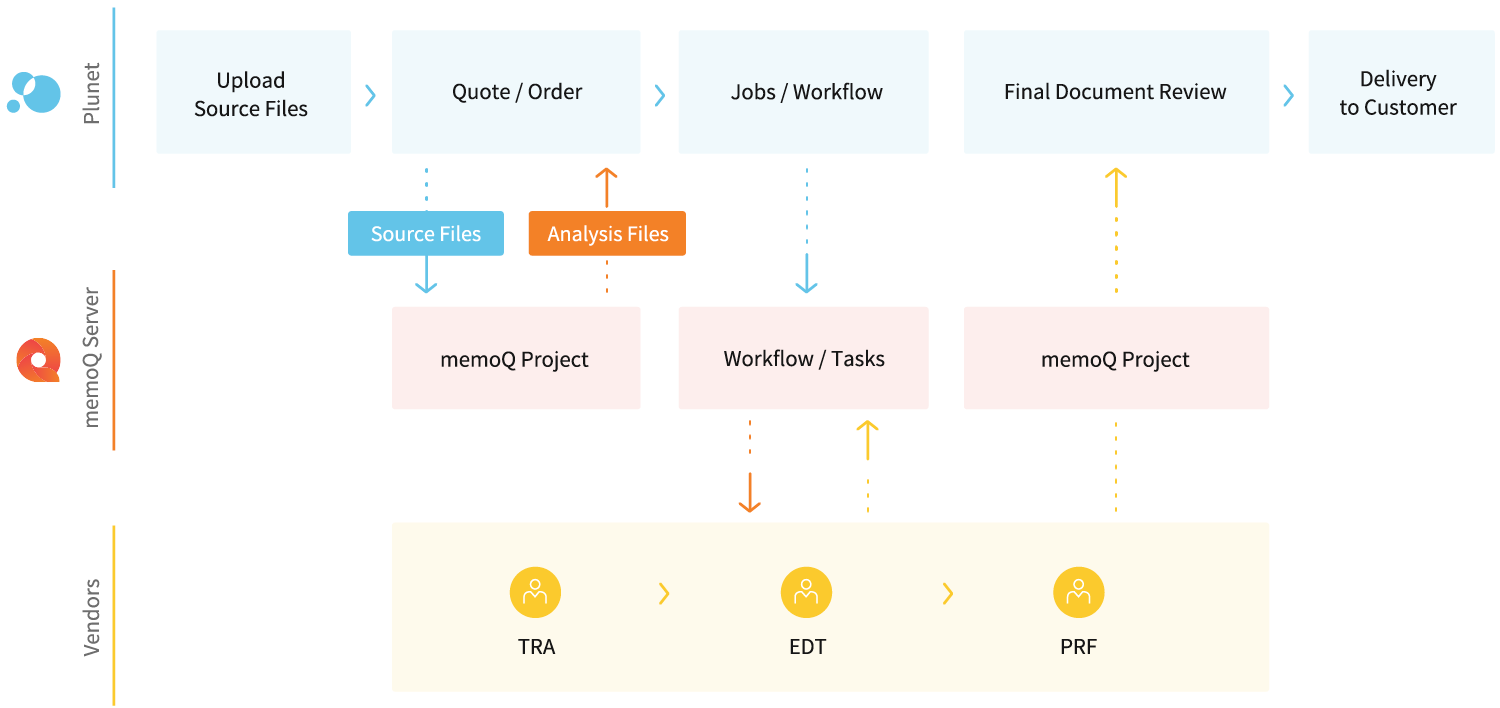
The acronyms BMS and TMS stand for two types of technology solutions in the translation industry that fulfill different requirements and can be used to complement each other.
In this article, we will describe the characteristics of these two systems and highlight the differences and potential links between them. Then we will focus on the key functions and benefits of our own BMS solution, Plunet BusinessManager.
Plunet’s dynamic CAT integrations with all of the major CAT providers on the market are proof that BMS and TMS can be combined very effectively. As an example, we will look closely at the dynamic CAT integration with memoQ.
What do BMS and TMS stand for?
In practice, the two acronyms BMS (Business Management System) and TMS (Translation Management System) are not always used consistently for systems that fulfill the defined criteria. To avoid any misunderstandings, we will refer to the definitions from Nimdzi, the international market research and consulting company for the language industry, and describe them in more detail.
BMS
Definition according to Nimdzi
Some providers and users are adamant that TMS is a system that has management functionality and does not necessarily have CAT tool functionality. But we call such technology a Business Management System (BMS) since that’s exactly what it does: it helps manage business operations.
Target group: Language service providers and internal translation services in larger organizations with simple to complex work processes. The system is used by many different parties, including customers, external service providers, and internal team members such as project managers, sales teams, quality managers, vendor managers, company owners, IT staff, and accounting departments.
Purpose: A BMS supports language service providers and translation departments in running their business, from accepting customer requests to creating orders to invoicing. A BMS manages not only translation workflows but also all of the other working steps that take place before and after a project.
Structure: The system is designed in such a way that the participants within a company or organization and their work processes can be connected with each other so that they are able to work together on the business strategy.
Components: Key components are database management for customers and vendors and access to important status reports, which help ensure that the right decisions are made for the success of the company.
TMS
Definition according to Nimdzi
Solutions that feature not only management capabilities but also CAT and quality assurance (QA) options are called TMS.
Target group: Organizations and language service providers. A TMS represents the link between customers, translation service providers, freelance translators, terminologists, editors, and proofreaders.
Purpose: A TMS supports complex translations and makes it possible to centrally manage and automate localization workflows. Everyone involved can work on these workflows simultaneously and from any location. The system supports them in consolidating and managing linguistic assets, automating processes, monitoring workflows, and facilitating real-time collaboration between translators and project managers.
Structure: The open architecture of a TMS makes it possible to connect different systems via interfaces, e.g. for content management, product information management, machine translation. In this way, a continuous process chain can be set up for seamless data exchange.
Components: The central components are a customer-specific translation memory (TM), a terminology database, and a translation tool. In addition, a TMS provides translation and quality management functions.
Plunet: The most important functions and benefits
After the general definitions of the two systems, we would now like to present a specific example of a BMS solution. Plunet is a web-based, configurable business management system that provides all of the major steps of a comprehensive project and workflow management process in one solution. In contrast to memoQ, Plunet does not offer any CAT tool functionalities, but can effectively incorporate them via a seamless CAT integration.
We will now look at a selection of the core features that characterize Plunet and the benefits that they can bring to users.
Contact management and CRM
Plunet has a comprehensive and customizable vendor and customer database, including granular access rights for different user types.
Benefits: Flexibility, overview, and control
Request and quote management
Requests from customers can be accepted manually, via the customer portal, via a third-party system (e.g. CRM) or directly from the customer’s website via the Plunet API.
The customer portal makes it possible to upload files easily and securely, whilst providing a transparent overview of requests and projects and automation of the workflow for customers.
Benefits Flexibility, time savings, and transparency
Invoice management and reporting
Plunet automates the process for both incoming and outgoing invoices. Users can easily create invoices in the system based on project and order data. All of the required information on currencies, taxes, and invoice contact data are taken from the relevant contact profile. Thanks to standardization and the resulting data accuracy, the risk of human error can be kept to a minimum and costs reduced.
Status reports make it possible for company owners to make strategic decisions based on real-time data and so enable better financial management.
Benefits: Cost savings and efficient financial decision-making
Centralization and standardization
All project information, data, and tasks are stored centrally in Plunet and can be accessed from all locations by everyone involved.
The standardization and automation of business workflows and work processes help to provide buyers with quicker service and enable easier onboarding processes.
Benefits: Time savings, increased quality, and error minimization
Seamless connections
Thanks to its modular system structure, Plunet can be seamlessly connected to software from a variety of third parties, such as financial accounting tools, CAT tools, and CMS solutions. This enables a highly efficient way of working.
Benefits: Flexibility and time savings
The CAT integration between Plunet and memoQ
Plunet’s seamless CAT integration with memoQ makes it possible to include important memoQ functions in the Plunet workflow. It is no longer necessary to switch between two systems, manual tasks can be significantly reduced, and a lot of time can be saved.
The graphic below shows what your translation management workflow could look like if you use the CAT integration between Plunet and memoQ.

Find out more on the integration between the two systems in our recorded Partner presentation with memoQ from May 13, 2020, and also in memoQ’s blog post on how the two systems complement each other perfectly.